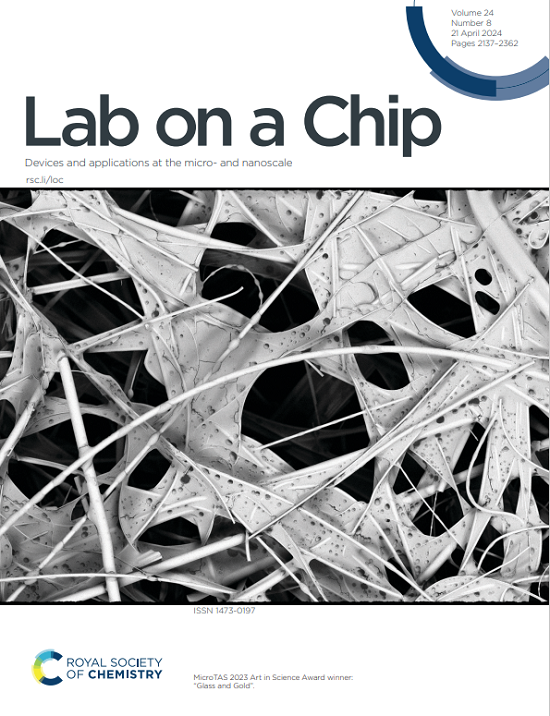一种基于膜的免疫传感器,具有高防污性能和敏感的分子识别。
IF 6.1
2区 工程技术
Q1 BIOCHEMICAL RESEARCH METHODS
引用次数: 0
摘要
非靶向生物分子在传感表面的污染会导致传感性能的降低,这是免疫传感平台面临的一个严重问题。在传感表面掺入亲水性聚合物对防污是有效的。然而,这种方法会降低捕获抗体的密度,导致灵敏度和信号输出的下降。在这里,使用基于多孔膜的免疫传感器实现了高灵敏度和防污性能。由于在亚微米尺度的孔中引入了抗体致密化的防污部分,该传感器可以大大减轻信号减少。通过数值模拟,估计了受体/防污段的理想比例。通过白细胞介素-6 (IL-6)的检测试验,证明了所设计传感器的高灵敏度和防污性能。该传感器具有良好的防污性和高灵敏度,在人工唾液和血清中的检测限分别为4.8和1.2 pg mL-1。研究结果强调了基于膜的传感器在实际诊断中的潜力。本文章由计算机程序翻译,如有差异,请以英文原文为准。
A membrane-based immunosensor enabling high antifouling performance and sensitive molecular recognition.
The fouling of non-targeted biomolecules on sensing surfaces, which can cause a reduction in sensing performance, is a severe problem in immunosensing platforms. The incorporation of hydrophilic polymers on sensing surfaces is effective against antifouling. However, such an approach can reduce the density of the capture antibody, resulting in a decrease in sensitivity and signal output. Here, both high sensitivity and antifouling properties were achieved using a porous-membrane-based immunosensor. This sensor can drastically mitigate the signal reduction due to the introduction of an antifouling moiety by antibody densification in submicron-scaled pores. The ideal ratio of the receptor/antifouling moiety was estimated from numerical modeling. The high sensitivity and antifouling properties of the designed sensor were demonstrated via the detection test of interleukin-6 (IL-6). The proposed sensor exhibited excellent antifouling and high sensitivity with limits of detection of 4.8 and 1.2 pg mL-1 in artificial saliva and serum, respectively. The study findings highlight the potential of membrane-based sensors for practical diagnoses.
求助全文
通过发布文献求助,成功后即可免费获取论文全文。
去求助
来源期刊

Lab on a Chip
工程技术-化学综合
CiteScore
11.10
自引率
8.20%
发文量
434
审稿时长
2.6 months
期刊介绍:
Lab on a Chip is the premiere journal that publishes cutting-edge research in the field of miniaturization. By their very nature, microfluidic/nanofluidic/miniaturized systems are at the intersection of disciplines, spanning fundamental research to high-end application, which is reflected by the broad readership of the journal. Lab on a Chip publishes two types of papers on original research: full-length research papers and communications. Papers should demonstrate innovations, which can come from technical advancements or applications addressing pressing needs in globally important areas. The journal also publishes Comments, Reviews, and Perspectives.
 求助内容:
求助内容: 应助结果提醒方式:
应助结果提醒方式:


